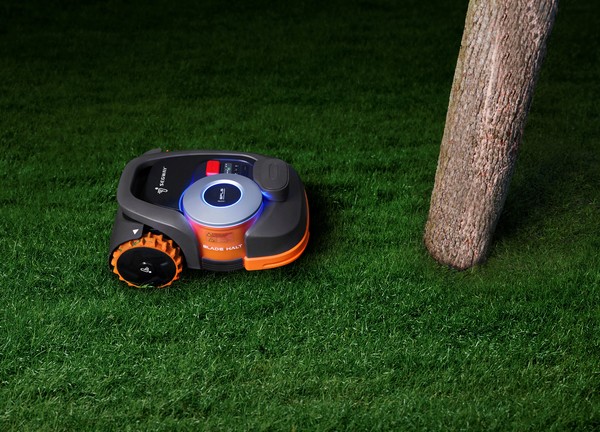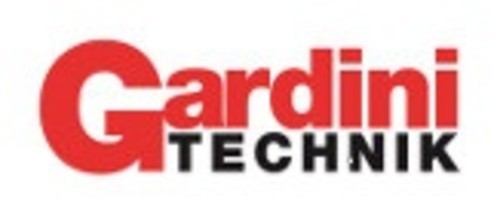
Autonomous navigation technologies of robotic lawnmowers
Lawn mowing robots are safe and sustainable machinery, gaining increasing market share. Thanks to Real-Time Kinematic (RTK)technology, which exploits the dynamic networks of the satellite navigation system, these machines can work autonomously
Robotic lawn mowers are gaining more and more space and visibility in the varied landscape of agricultural and gardening robotics. Their widespread use, closely linked to several time and efficiency advantages, ensures greater operator safety and environmental friendliness. The machines' battery-powered use aligns with the growing focus on environmental sustainability as it allows the use of fewer fossil fuels, reducing carbon dioxide and greenhouse gas emissions. The ever-increasing popularity of robotic lawn mowers is also confirmed by market analyses of agricultural machinery and gardening equipment for the first half of 2023 (based on data provided by the manufacturers' association Comagarden). Compared with a downturn in the segment, these analyses showed a significant incremental trend in sales (+13%). Bearing in mind all the aspects listed above, it is only natural for many green operators to look to the segment of robotic lawnmowers, which, to date, are high-performance and increasingly efficient machines capable of handling both small gardens and larger spaces. Equipped with a battery self-charging system, these machines are programmed to operate lawn mowing almost completely autonomously, except for human programming and maintenance. Moreover, these robots feature advanced autonomous navigation capabilities designed to ensure superior precision and quality during mowing. In fact, the presence of state-of-the-art sensor technology enables them to sense their surroundings and changing ground conditions. Their basic sensor technology consists of lift, tilt and ultrasonic sensors through which they adapt to each context's specific needs. Besides the different types of models offered by manufacturers, robotic lawn mowers share several key features, including an advanced cutting system with pivoting blades that offer mulching and cutting width adjustment for precise and flawless results while maintaining a low noise level of 58 to 72 decibels. Energy-wise, they are highly efficient, with consumption ranging from 5 to 130 kilowatt hours per month under maximum use. Despite high performance, robotic lawn mowers exhibit fairly low weight, ranging from 5 to 72 kilograms, thus minimizing soil compaction. They also show remarkable maneuvering ability, handling narrow passages with agility and precision, and can operate on steep slopes, reaching a maximum of 70 percent within the working area and 50 percent near the perimeter or virtual cable. Besides these common features, the different autonomous mowers differ in the specific type of use they are intended for. Some models are designed to maintain ordinary and ornamental green areas, while others are designed for more intensive professional services. Being versatile and flexible, they cover a wide range of work areas, ranging from small sizes of less than 250 square meters to large spaces of up to 75,000 square meters. Finally, they feature different navigation modes, which can be random, systematic (with diversified patterns) or a combination of both to suit the specific needs of each context. The positioning technology that, to date, has proven most effective in ensuring the accuracy of robot trajectories is Real-Time Kinematics (RTK). This tracking system exploits dynamic networks of the global navigation satellite system, providing accuracy in the centimeter range. It is a real-time differential kinematic correction system that uses the one sent to the receiver from a base station, located no more than a few kilometers away from the point where it is being operated, as the correction signal. The RTK system can consist of either a pair of receivers or a network of permanent stations. In the first case, there is a pair of receivers, the base at a point of known coordinates, and a mobile rover. In the latter case, however, only a rover is needed that receives the correction from a network of permanent stations, usually with a phone connected to the network that acquires the correction with a precise communication protocol. The major limitation of this technology that can adversely affect the degree of accuracy of satellite positioning is the presence of trees, buildings, and overcast skies. The issue can now be overcome with alternative methods, including odometry, inertial navigation, and technologies such as the VisionFence of Segway Navimow lawnmowers. These machines use an Exact Fusion Locating System positioning module in conjunction with RTK. Meanwhile, the VisionFence Sensor system is a technology based on an advanced visual recognition algorithm that enables the robot to detect obstacles without considering them as "no-go" areas and to solve poor signal problems by detecting the edge of the garden and allowing mowing to continue. Another technology that increases the efficiency of RTK systems is the Active Guidance System (AGS) technology, adopted by STIGA robotic lawn mowers. AGS enables even smarter cutting planning in every garden area by avoiding overlaps or neglected areas, a maximum error margin of 2 cm, and a stable signal with constant communication with the robot's reference station.
Sofia Matilde Luglio








